Louis Ernest Barrias
‘La Nature se dévoilant devant la Science’, By Louis-Ernest Barrias (French, 1841 – 1905)
£170,000
'La Nature se dévoilant devant la Science', A Large and Rare Gilt and Silvered Bronze and Marble Figure entitled ('Nature unveiling itself before science')...
Dimensiones
Height: 97 cm (39 in)Width: 45 cm (18 in)
Depth: 27 cm (11 in)
Weight: 66 kg
Descripción
‘La Nature se dévoilant devant la Science’, A Large and Rare Gilt and Silvered Bronze and Marble Figure entitled (‘Nature unveiling itself before science’) By Louis-Ernest Barrias (French, 1841 – 1905).
Louis-Ernest Barrias (French, 1841 – 1905).
‘La Nature se dévoilant devant la Science’ (‘Nature unveiling itself before science’)
Silver, Gilt and Patinated bronze. White Marble. Green marble base with pyrite flecks. The scarab beetle broach in lapis lazuli.
Cast as part of a limited edition by the Susse Frères foundry, Paris, from the model by Louis-Ernest Barrias (French, 1841 – 1905). Conceived in 1893/99. This cast Circa 1900.
Signed: ‘E. Barrias’ and with the ‘SUSSE FRERES EDITEURS PARIS’ foundry stamp above letter ‘W’.
Barrias’ most celebrated work, an homage to advances made in scientific exploration, first appeared in marble at the Paris Salon of 1893 by its lengthier title ‘La Nature mystérieuse et voil se découvre devant la Science’ (no. 2543) and was fittingly acquired by the faculty at l’Ecole de Médecine in Bordeaux. This first version was entirely nude apart from the veil which hung over her head and fell to her toes.
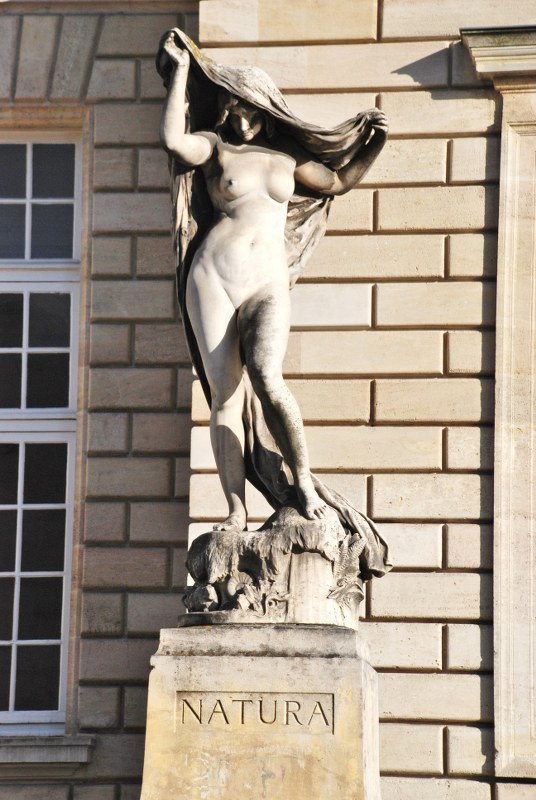
‘NATURA’, Bordeaux
The first version shown at the Paris Salon of 1893. and today outside Bordeaux University.
Barrias presented a reduced and edited version of this subject, partly clothed like the present example, at the Salon of 1899 simply titled ‘La Nature se dèvoilant’ (no. 3186). Executed in polychrome marble and Algerian onyx it stands two meters high and was intended for the main staircase of the Conservatoire des Arts et Métiers in Paris. It was acquired by the French state and displayed at Musée du Luxemburg from 1903 and moved to the musée d’Orsay in 1986 (inventory number RF 1409).
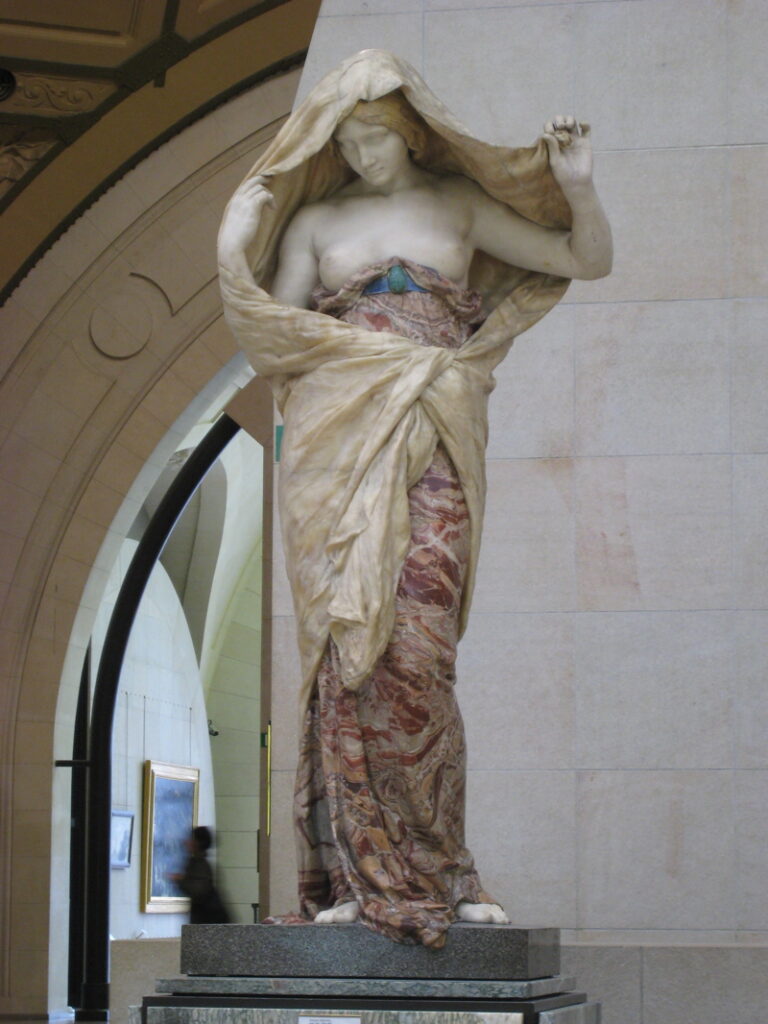
La Nature Se Dévoilant, Musée d’Orsay
The second version which stands 2 meters tall was executed in polychrome marble and Algerian onyx and shown at the Paris Salon of 1899 (Musée d’Orsay, photo credit Wikipedia).
The female nude conveys the symbolism of nature reflecting the revelations of natural science as discovered through scientific advancements, with exposed breasts being a symbol of nature in allegorical figures from the Renaissance. Accusations of coquettish intentions, at the time and since, rather miss this point, but still and undeniably, the subject “testifies to a sense of beauty, entirely personal and expressive of dreams common to so many men, that will long provide in those who contemplate it a feeling of tenderness” (G. Mourey, ‘Ernest Barrias’, Les Arts, No. 40, April 1905., p. 32.).
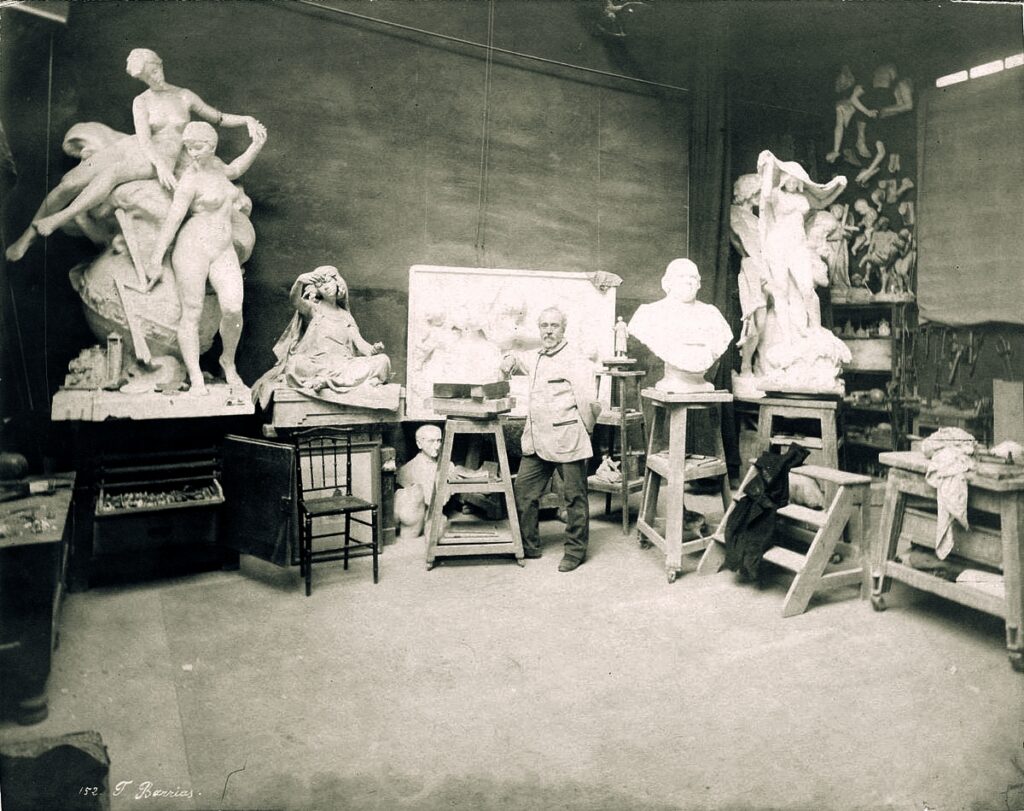
Photograph of Ernest Barrias in his studio circa 1899, with ‘La Nature se dévoilant à la Science’ shown on the right hand side.
The first bronze casts exhibited by Susse were shown to great critical acclaim at the 1900 Exposition Universelle. At the Liège Exhibition of 1905, the renowned bronzier Théodore Millet deemed the model a tour de force for the Susse firm, proclaiming “La Nature se dévoilant devant la Science by the late Ernest Barrias can be considered the most beautiful of the works on display; it also won a Grand Prize for MM. Susse Frères” (Exposition Universelle & Internationale de Liège 1905, Section Française, Classe 97, Rapport Par M. Th. Millet, Comité Français des Exposition à L’Étranger, Paris, 1907, p. 14).
The foundry Susse Frères cast the bronze in five different sizes (97, 73, 58, 43, and 24 cm high) and with a variety of patinas, sometimes with the inclusion of marble for the face, upper body, and feet. The use of gold, silver and precious materials adds to the sense of opulence typical of the fin-de-siècle. The complexity of the reduction process employed to make the Susse Frères editions, as well as the use of multicoloured patinas also speaks to the sense of scientific advancement embodied by Nature unveiling itself before science. As noted in the catalogue for the exhibition The Colour of Sculpture, held in 1996 at the Van Gogh Museum in Amsterdam and the Henry Moore Institute in Leeds, the sculpture itself is a symbol of technological advancement:
“Breathtaking technical progress seemed to solve all the mysteries of the world, and it appeared only a matter of time before—to use Barrias’s visual language—nature revealed its last secrets. That such […] academic female figures could still be employed at the beginning of the age of electricity is characteristic for the nineteenth-century, with its usual simultaneity of heterogeneous forms of expression.” (A. Blühm, The Colour of Sculpture, 1840-1910 [Amsterdam: Van Gogh Museum; Leeds: Henry Moore Institute; Zwolle: Waanders Uitgevers, 1996], p.186).
The present bronze measures 97 cm. high and is a rare example of the largest size cast by Susse Frères and incorporating white marble for the bust. Examples of the smaller size appear more frequently on the market, but this largest size is rare. A much smaller Susse Frères reduction of ‘La Nature se dévoilant devant la Science’, measuring 58 cm. high, is in the collection of the National Gallery of Art, Washington D.C., USA (Accession No. 2004.166.1).
Francia, alrededor de 1900.
On a Pink Breccia Marble Pedestal.
Dimensions of Marble Pedestal
Height: 111 cm | 44 inches
Width: 38 cm | 15 inches
Depth: 38 cm | 15 inches
Fecha
Alrededor de 1880
Origen
Francia
Medio
Bronze & Marble
Firma
Signed: 'E. Barrias' and with the 'SUSSE FRERES EDITEURS PARIS' foundry stamp above letter 'W'.
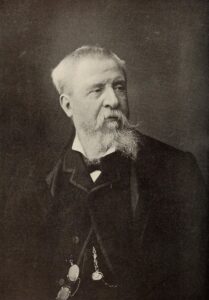
Louis-Ernest Barrias, c. 1899, (Wikipedia)
Louis-Ernest Barrias (1841 – 1905) was one of the most celebrated and influential sculptors of the late nineteenth century. Along with contemporaries such as Batholdi (of Statue of Liberty fame), he was influential in re-inventing a new sophisticated approach to allegorical representation, evident in the romantic figure of Nature Revealing Herself, but also in handling themes of modernity such as his Allegory to Electricity for the Gallery of Machines at the 1889 Exposition Universelle.
Born in Paris into a family of well known artists Louis-Ernest started his career as a painter. He studied under Léon Cogniet, before later taking up sculpture under Pierre-Jules Cavelier and following his admittance to the École des Beaux-Arts in Paris 1858, François Jouffroy. In 1865 Barrias won the Prix de Rome and was involved in the decoration of the Paris Opéra and the Hôtel de la Païva in the Champs-Élysées.
In 1878 he was made a Knight of the Legion of Honour, an officer in 1881, and a commander in 1900. Barrias replaced Dumont at the Institut de France in 1884 and succeeded Cavelier as professor at the École des Beaux-Arts.
G. Mourey, ‘Ernest Barrias’, Les Arts, No. 40, April 1905., pp. 29-33.
G. Lafenestre, ‘L’Oeuvre de Ernest Barrias’, Paris. 1908. p .10.
P. Fusco and H. Janson, ‘The Romantics to Rodin’, exh. cat. Los Angeles, 1980, pp. 118-120, no. 10.
P. Cadet, ‘Susse Frères: 150 Years of Sculpture 1837-1987’, Arcueil, Paris, 1992, p. 52, 281.
P. Kjellberg, ‘Bronzes of the 19th Century: Dictionary of Sculptors’, 1994, Pennsylvania, pp.49-51.
C. Y. Pierre, ‘Louis-Ernest Barrias and Modern Allegories of Technology’ (https://www.19thc-artworldwide.org/summer12/caterina-pierre-louis-ernest-barrias).
TAMBIÉN TE PUEDE GUSTAR
-
£28,000 Añadir a la cesta
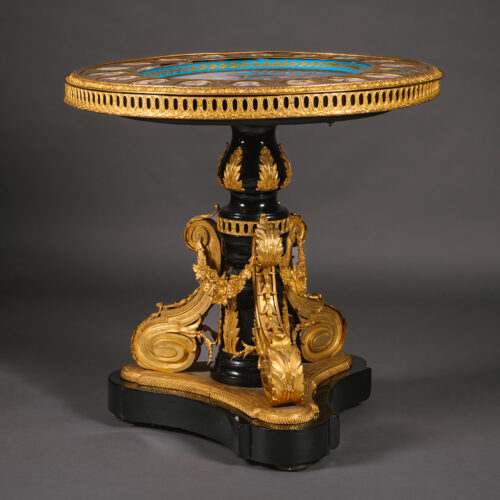
Sèvres (Estilo)
A Fine Sèvres-Style Porcelain and Gilt-Bronze Mounted Ebonised Centre Table
-
£32,000 Añadir a la cesta
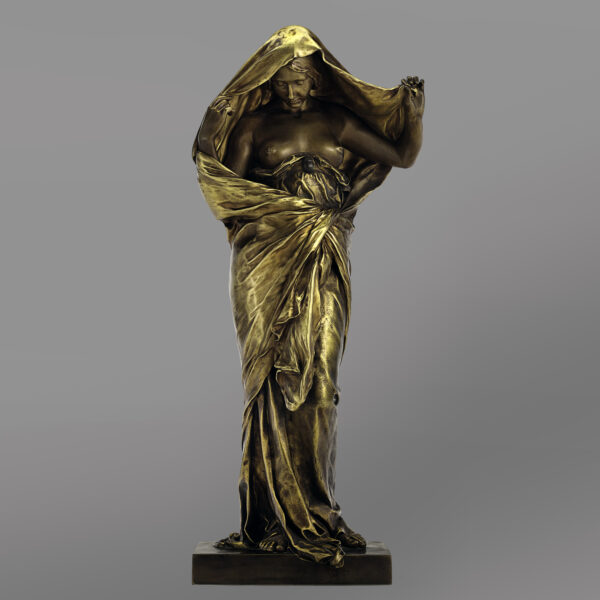
Louis Ernest Barrias
La naturaleza se desvía de la ciencia" - Una figura de bronce
-
£9,000 Añadir a la cesta
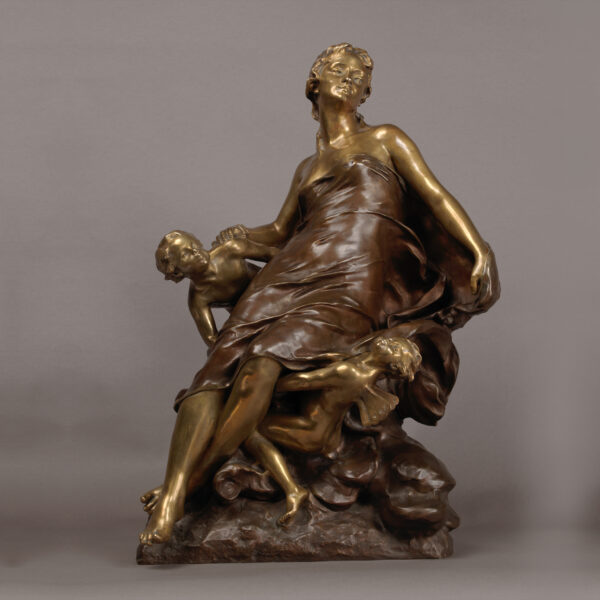
François-Raoul Larche
‘Cupid & Psyche’ An Important Parcel-Gilt and Patinated Bronze Figure
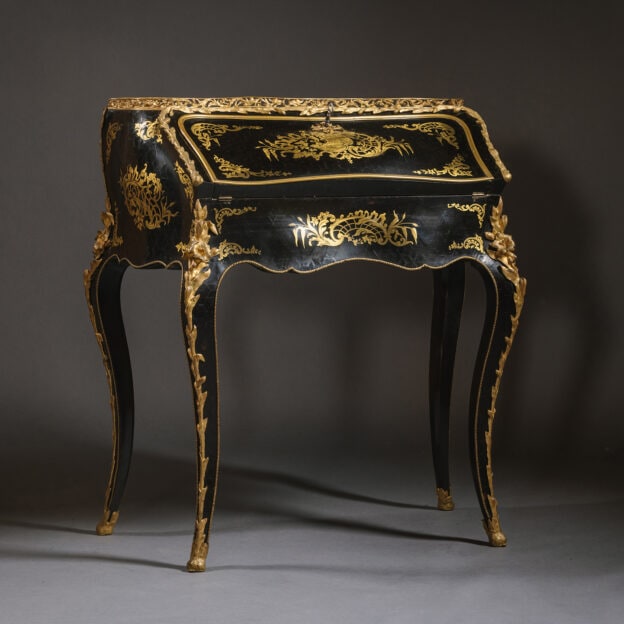




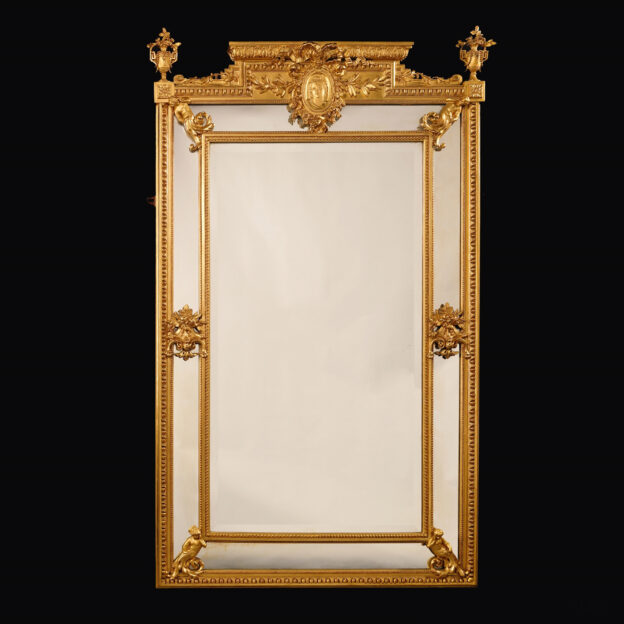
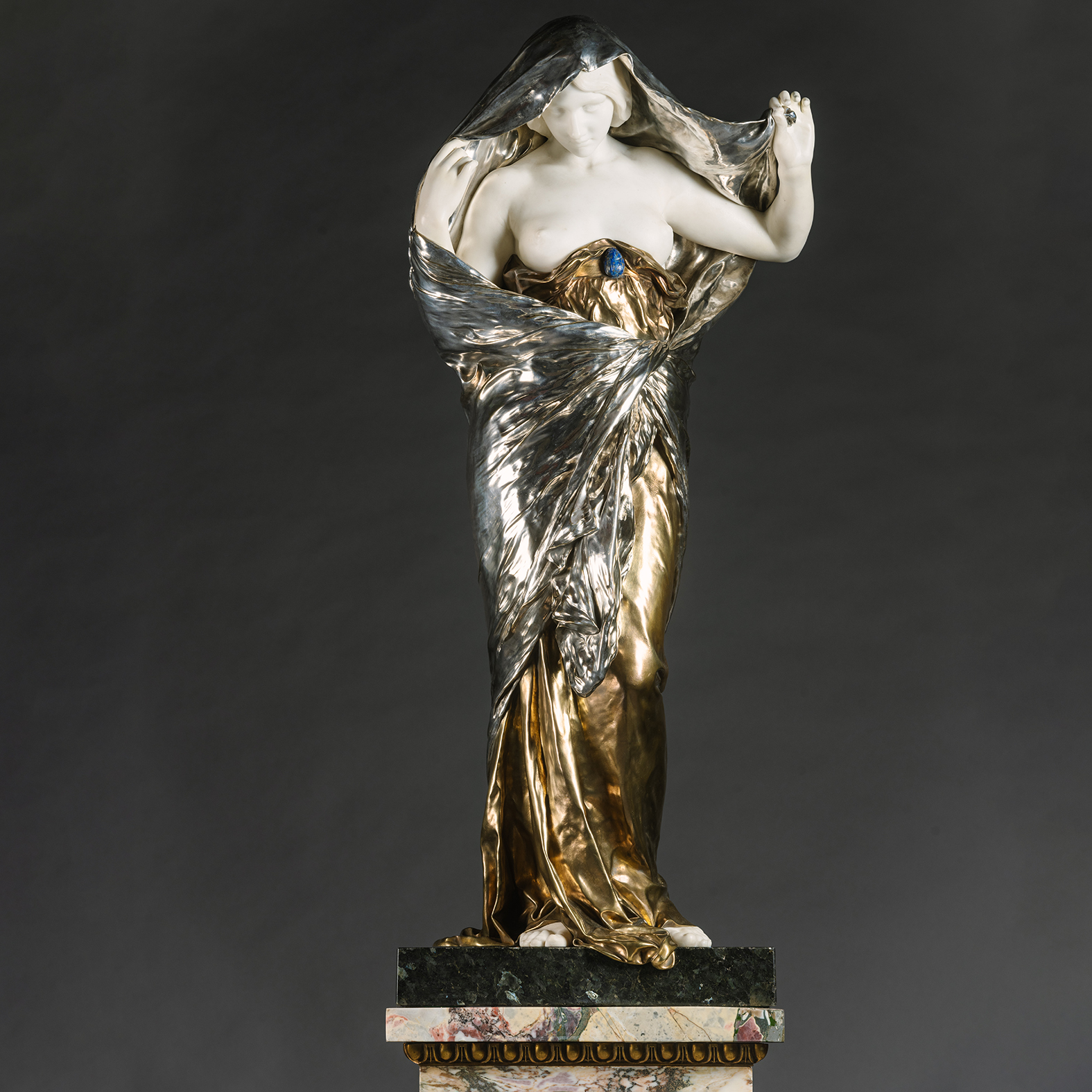
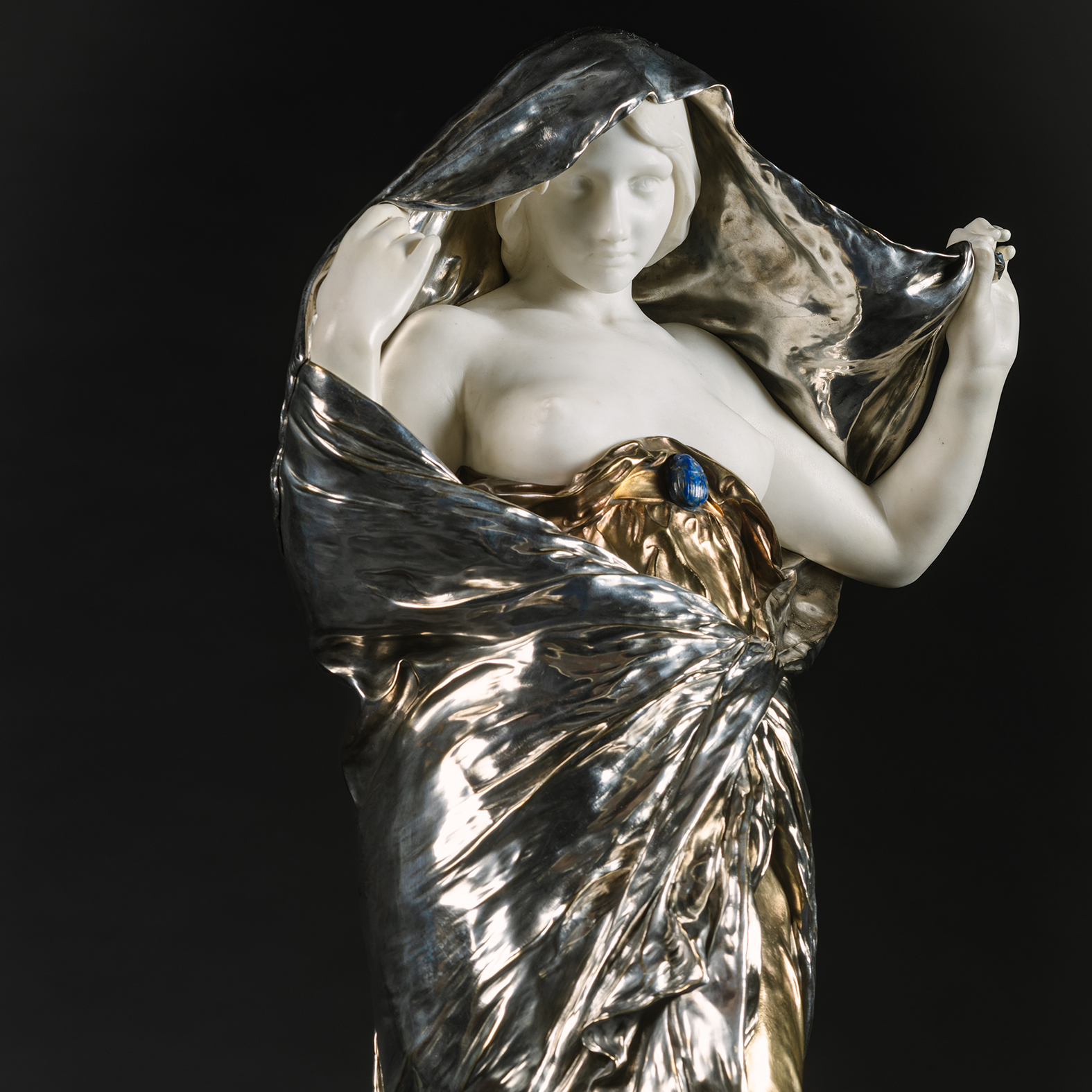
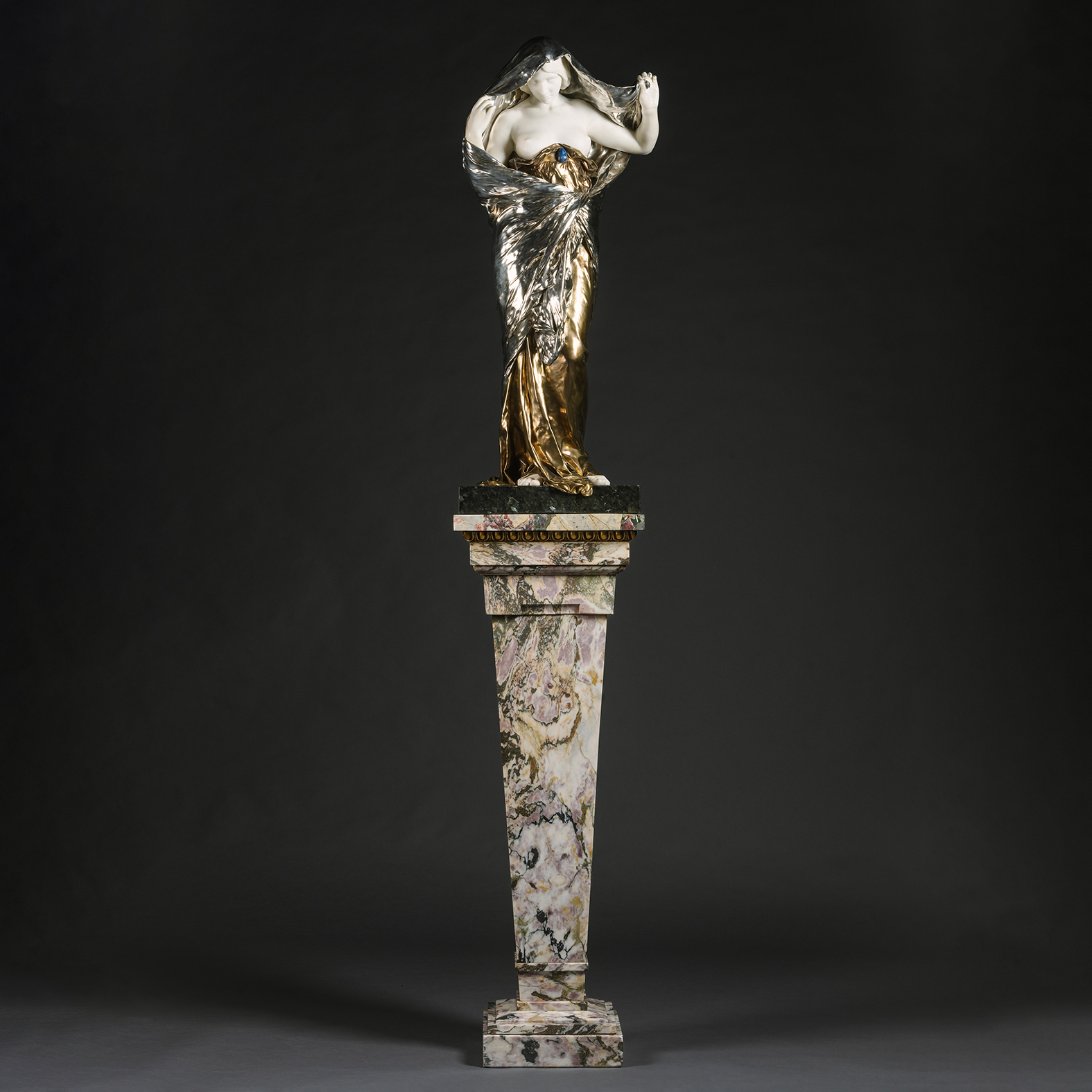
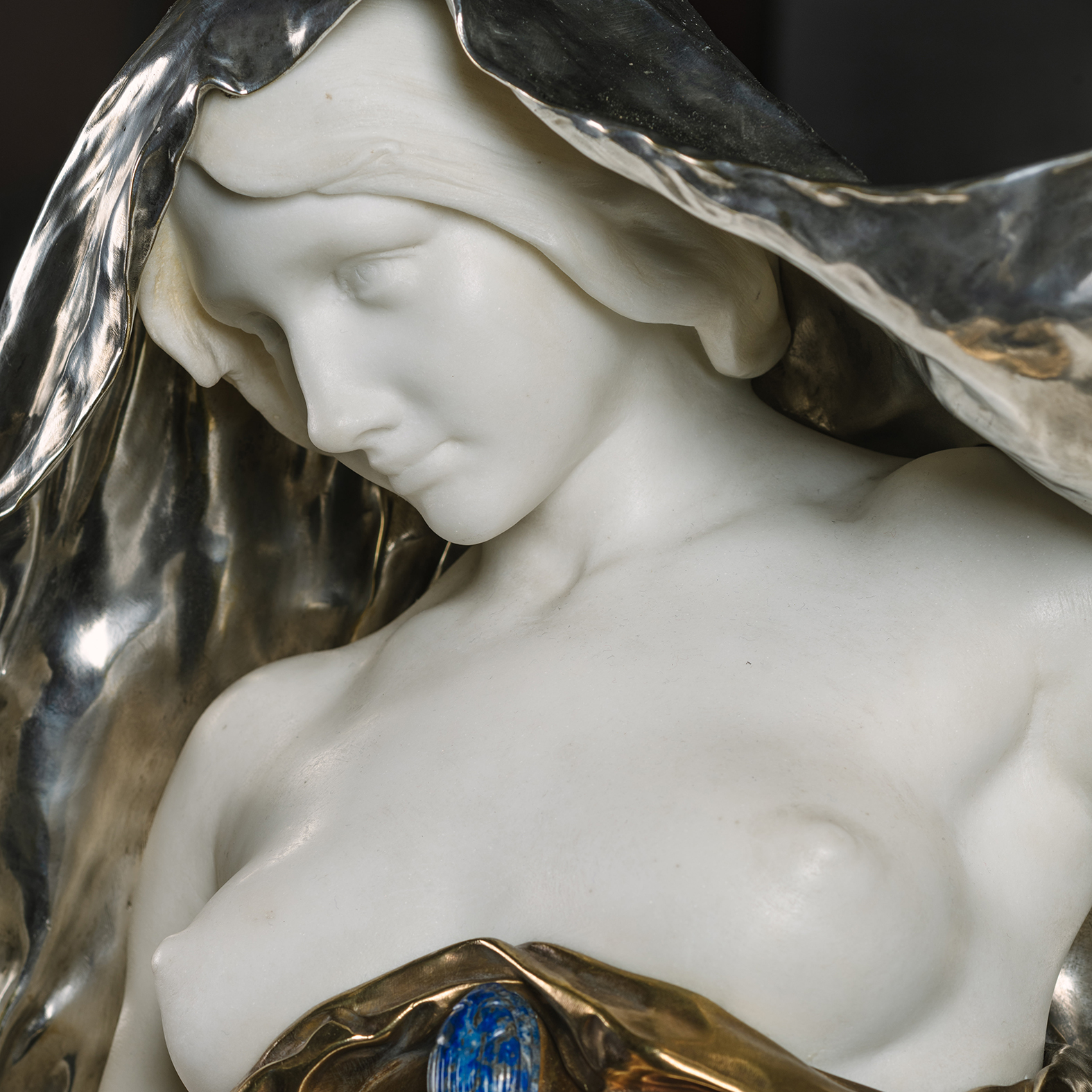
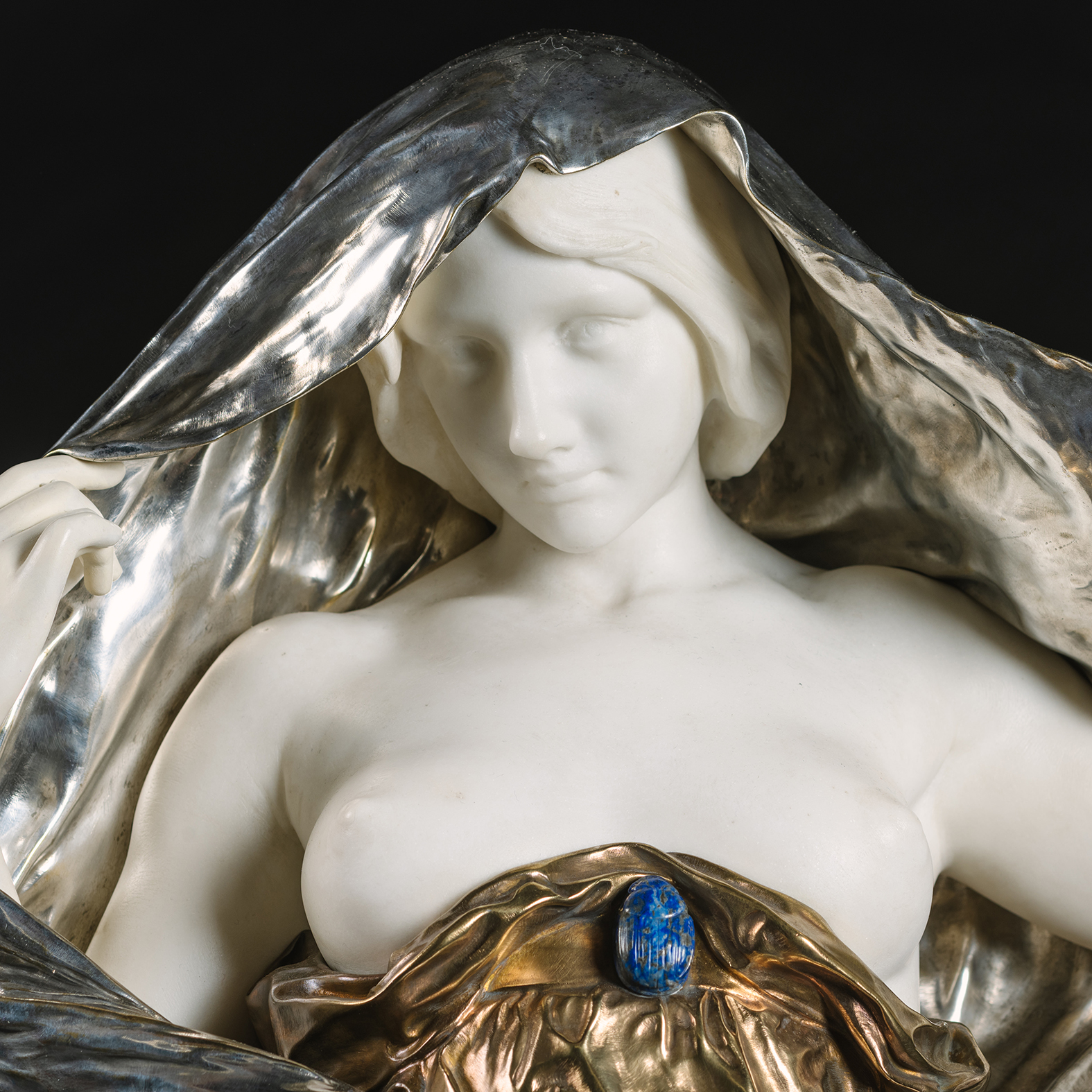
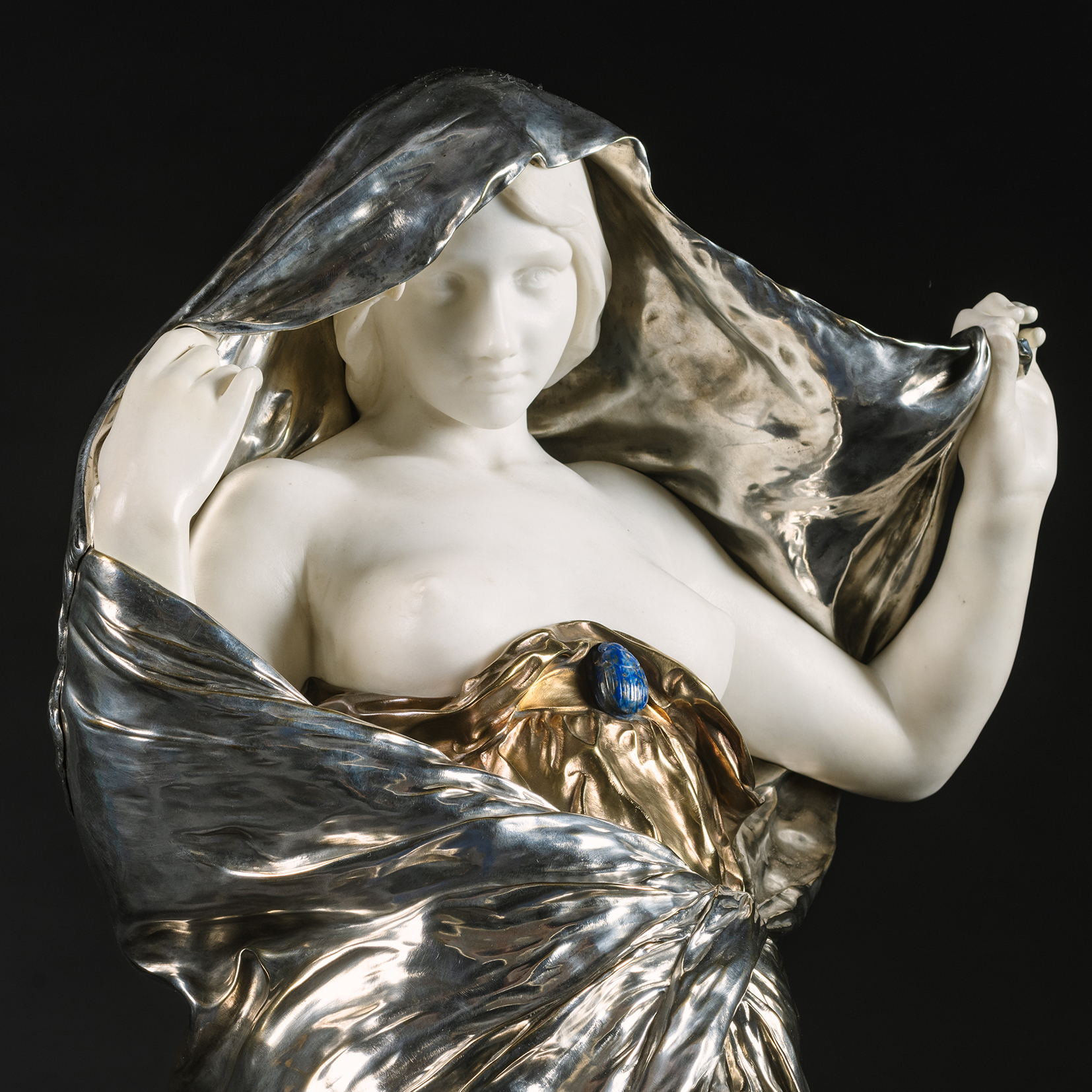
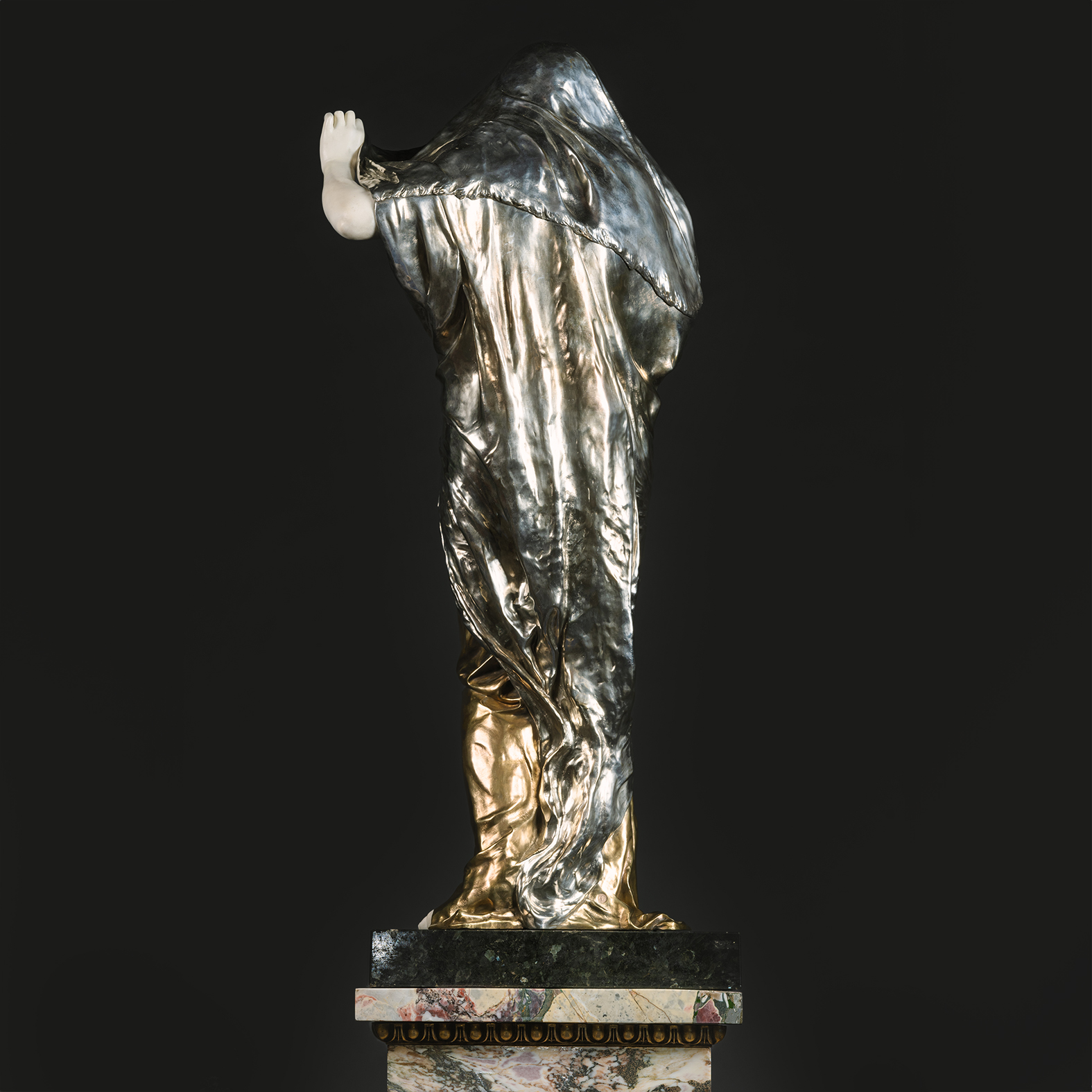
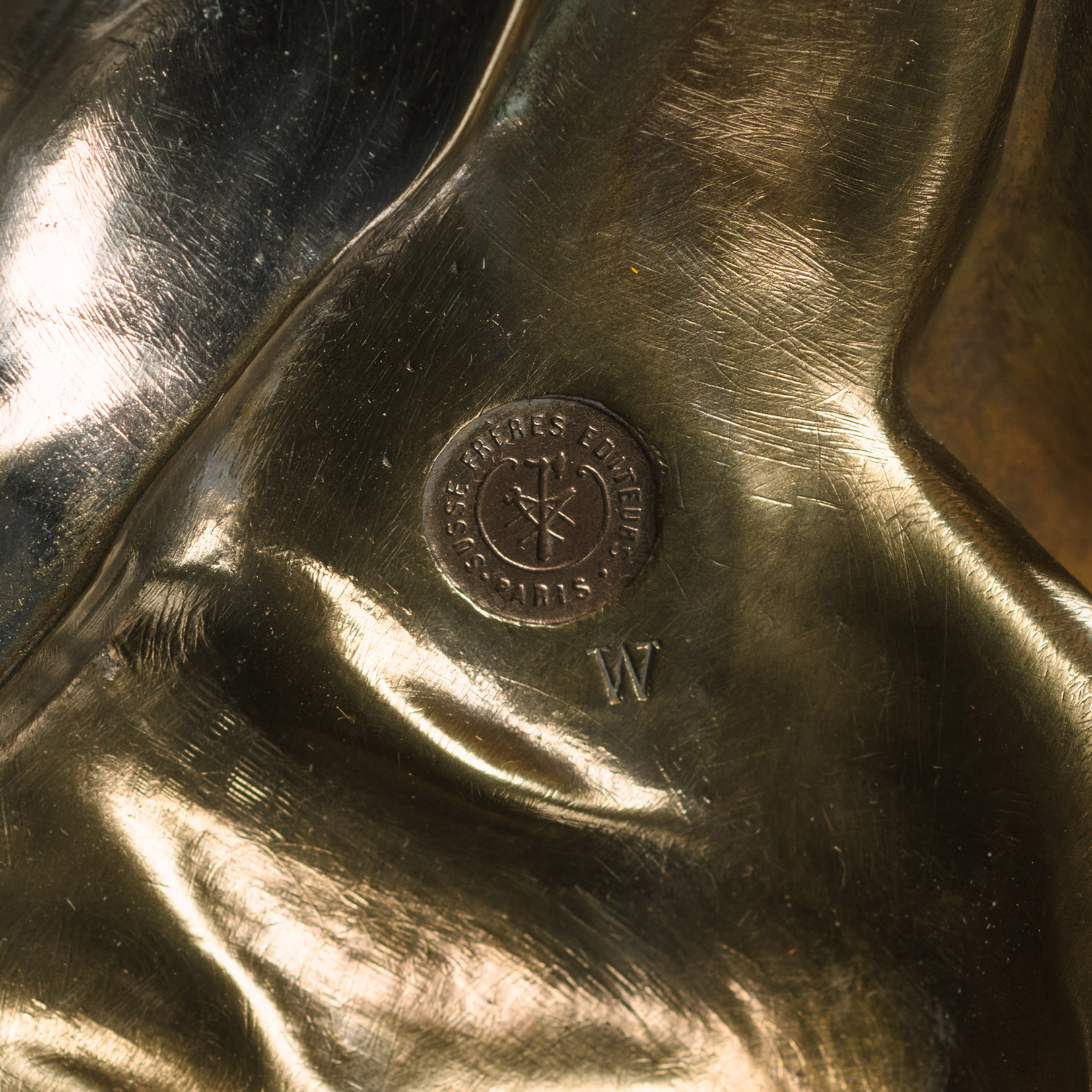
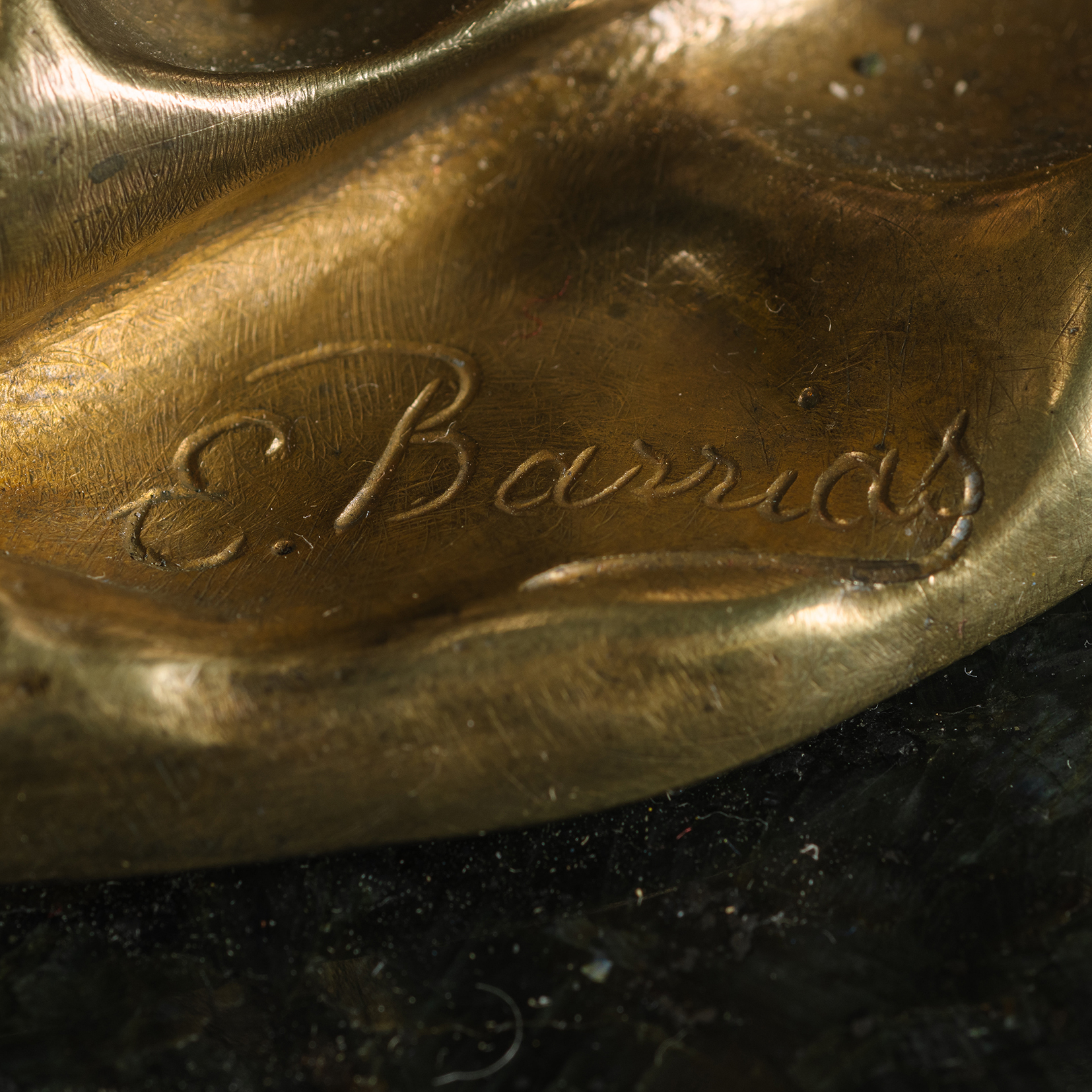

 Imprimir
Imprimir